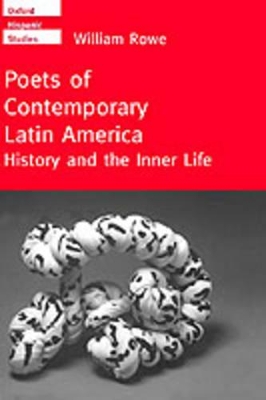Oxford Hispanic Studies
1 total work
What came after Neruda and Vallejo? This is the first book to answer that question, presenting the new movements in Latin American poetry since 1950. Eight poets are selected, with substantial excerpts from their work and parallel translations in English: the test for inclusion is whether their writing expands the possibilities of poetry. Some - for example Juan L. Ortiz, Nicanor Parra, Gonzalo Rojas, Ana Enriqueta Teran - reached maturity well before
mid-century, but have continued to explore new poetic expression in the decades since; the younger generation of poets chosen includes Ernesto Cardenal as well as lesser-known figures: Jorge Eduardo Eielson, Carmen Olle, and Raul Zurita. Together they display the new forms and languages of poetry which have been
emerging in contemporary Latin America.
Revealing the freshness of the poems, as they invite new perceptions of the world and of language, is paramount in this study. Its method is to bring together poetics with cultural studies, presenting detailed readings of the work of each poet, as well as exposition and discussion of their poetics, especially where they grapple with the tensions between the inner self and history in the later twentieth century.
mid-century, but have continued to explore new poetic expression in the decades since; the younger generation of poets chosen includes Ernesto Cardenal as well as lesser-known figures: Jorge Eduardo Eielson, Carmen Olle, and Raul Zurita. Together they display the new forms and languages of poetry which have been
emerging in contemporary Latin America.
Revealing the freshness of the poems, as they invite new perceptions of the world and of language, is paramount in this study. Its method is to bring together poetics with cultural studies, presenting detailed readings of the work of each poet, as well as exposition and discussion of their poetics, especially where they grapple with the tensions between the inner self and history in the later twentieth century.
